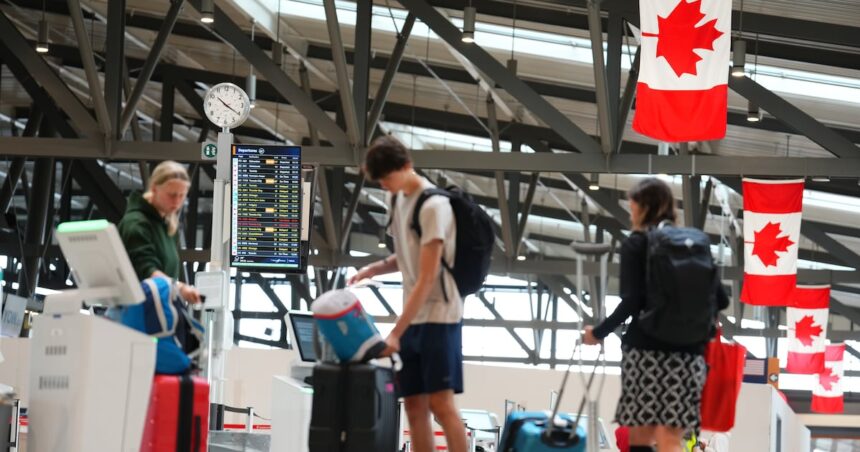A significant shift is emerging in Canadian travel patterns this summer, with more travelers opting to explore domestic destinations rather than crossing the border into the United States. Recent surveys indicate this trend is driven by a complex interplay of economic pressures, changing travel preferences, and lingering pandemic effects.
“We’re seeing Canadians make calculated decisions about their vacation dollars,” explains tourism analyst Meredith Chen. “The exchange rate continues to be a primary factor, with the Canadian dollar hovering around 73 cents US, making American destinations considerably more expensive than in previous years.”
According to data from the Conference Board of Canada, domestic tourism spending is projected to increase by 4.2% this summer compared to 2023, while cross-border trips to the US are expected to decline by approximately 7% during the same period. This represents a significant reversal from pre-pandemic patterns when US destinations dominated Canadian summer travel plans.
Financial considerations are playing a major role in this shift. A recent CO24 Business survey found that 67% of Canadians cite economic concerns as their primary reason for staying within national borders this summer. With inflation affecting everything from groceries to gas prices, many families are seeking vacation experiences that offer better value without the currency exchange penalty.
“We initially planned a week in Florida, but when we calculated the total cost with the exchange rate, we pivoted to exploring British Columbia instead,” says Toronto resident Anita Sharma. “We’re actually getting more days of vacation for the same budget by staying in Canada.”
Beyond economics, there’s growing appreciation for Canada’s diverse tourism offerings. Parks Canada reports a 15% increase in advance reservations for summer 2024 compared to last year. Popular destinations like Banff National Park, Prince Edward Island’s coastlines, and Quebec’s cultural corridors are experiencing particularly high demand.
The trend extends beyond leisure travel. Business conventions and corporate retreats are increasingly being held at Canadian venues rather than traditional US conference hubs. The Toronto Convention Centre reports its strongest summer booking season since 2019, with a 22% increase in reservations compared to last summer.
Industry experts suggest this domestic focus may have lasting impacts on Canada’s tourism infrastructure. “We’re seeing significant investments in upgrading accommodations and attractions across the country,” notes Darren Williams, president of the Canadian Tourism Association. “This could strengthen our domestic tourism economy for years to come.”
International travel beyond North America, however, shows mixed results. European destinations are experiencing moderate growth among Canadian travelers, particularly to countries where the euro has weakened against the Canadian dollar. Meanwhile, direct flights to Asian destinations from major Canadian hubs have increased by 18% compared to last summer, according to Air Canada data.
The environmental consciousness of travelers also appears to be influencing decisions. A CO24 News poll indicates that 41% of Canadian travelers consider carbon footprint when planning vacations, with shorter-distance trips increasingly seen as more responsible choices.
Tourism operators across Canada are responding to this domestic focus with enhanced offerings and competitive pricing. “We’ve completely reimagined our summer packages to appeal specifically to Canadian travelers,” explains Jasper hotelier Caroline Dumont. “That means highlighting value, authentic experiences, and the unique aspects of our region that international visitors have always appreciated.”
As summer approaches, the question remains: will this domestic travel trend represent a temporary adjustment to economic conditions, or does it signal a more fundamental shift in how Canadians view vacation possibilities within their own borders?










